Treatments Focus
Rare Genetic Diseases with Causes, Diagnosis and Treatment
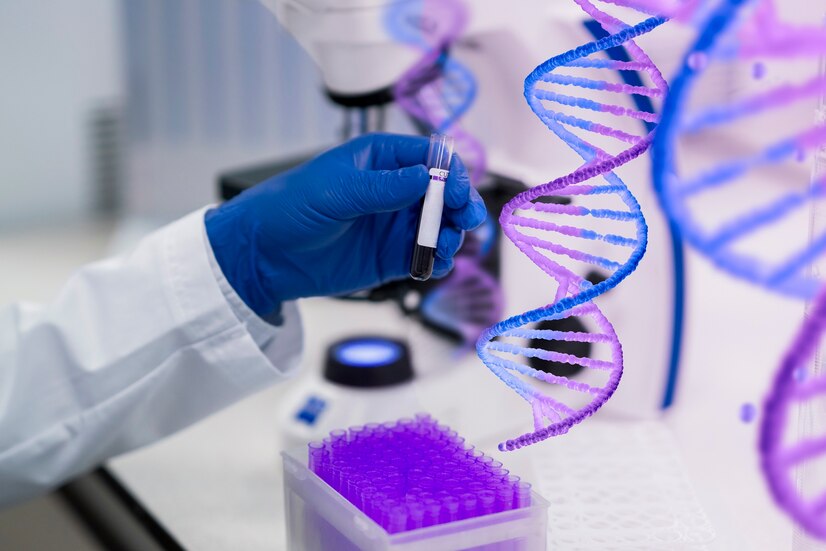
We all have suffered from illnesses like flu, diarrhoea, typhoid or dengue. These are common diseases and are readily diagnosed and treated. However there are conditions where diagnosis is difficult because the disorder is rare. A rare disease is a disease or disorder that affects a small percentage of people. Many times the diagnosis takes years as the patient has to go from one specialist to the other trying to find the root cause of the disorder. Four out of five rare diseases are attributed to be genetic in origin, which means the problem lies at a deeper level. These genetic and rare diseases are also called rare genetic diseases, and few of them fall in the category of rarest of genetic disorders. Luckily, the study of the human genome has led to substantial advances in discovering the cause of very rare genetic disorders.
Can a rare genetic disorders inherited genetically?
Genetic diseases are determined by the combination of genes for a particular trait that are on the chromosomes received from the father and the mother. Recessive genetic disorders occur when an individual inherits the same abnormal gene for the same trait from each parent. If an individual receives one normal gene and one gene for the disease, the person will be a carrier of the disease, but usually show no symptoms. The risk for two carrier parents to both pass the defective gene and have an affected child is 25% with each pregnancy. The risk of having a child who is a carrier like the parents is 50% with each pregnancy. To answer the question yes, an individual can inherit rare genetic diseases or extremely rare genetic disorders.
Aarskog syndrome is a rare genetic disorder characterized by short stature and multiple facial, limb and genital abnormalities. It primarily affects males. Clinical signs may vary from person to person even within families. Males with aarskog syndrome often have a rounded face with a broad forehead, widely spaced eyes, a small nose with nostrils that are flared forwards and an underdeveloped upper jawbone. They may also have abnormalities affecting ears and teeth.
Causes
Aarskog syndrome is an X-linked recessive rare genetic disorder caused by mutation in the FGDI gene. Females who have a disease causing mutation on one of their X- chromosome are carriers of this disorder. The males with X-linked disorder will pass the disease gene to their daughters(since they pass only their Y chromosome to their sons).
Affected population
Approximately 60 reports of Aarskog syndrome confirmed by identification of a FDGI gene mutation have been published worldwide. However, it is possible that some mildly affected children may be unrecognised, making it difficult to determine the true frequency of this condition in the general population. Thus an estimated population prevalence of Aarskog syndrome is 1: 25000.
Diagnosis
The diagnosis of this rare genetic disease may be considered upon clinical evaluation, detailed patient and family history. Molecular genetic testing of the FDGI gene mutation is performed to confirm the diagnosis.
Treatment
Growth hormone treatment has been reported to improve height in some children. In some cases surgery may be necessary to treat specific congenital or structural malformations.
Causes
Some cases of DE Barsy syndrome are caused by mutations in either the PYCR1 or ALDH18A1 genes.
Affected population
This rare genetic disorder affects both females and males in equal numbers. Fewer than 50 cases have been reported in the medical literature. Ths syndrome is usually obvious at birth or early infancy but some cases may still go misdiagnosed or undiagnosed.
Diagnosis
A diagnosis of De Barsy syndrome can be done through clinical evaluations, detailed patient’s history and through Molecular genetic testing. Treatment
Specific therapies include surgery to repair skeletal problems. Some patients elect for plastic surgery to improve skin symptoms. Early developmental intervention is important to ensure the affected children reach their potential.Physiotherapy may be useful to help prevent contractures. Affected Individuals are advised to monitor environmental triggers that can worsen the symptoms.
Causes
L1 syndrome is caused by mutations in the L1CAM gene.
Affected population
This extremely rare genetic disease is X-linked, hence occurs in males and affects about 1 in 30,000. Approximately 5% of female carriers are known to have mild symptoms.
Diagnosis
MRI or autopsy confirms the diagnosis of L1 syndrome. Molecular genetic testing for L1CAM gene is available to confirm the diagnosis.
Treatment
The treatment of L1 syndrome is directed towards the specific symptoms that are apparent in each individual. In some cases surgical treatment has to be performed. Early intervention is important to ensure that children with L1 syndrome reach their potential.
Causes
Current research suggests that genetic abnormalities(mutations) underlie the process by which cells become cancerous. The malignancies often develop due to mutations in genes called the oncogenes.
Affected population
It is estimated that 3-19 people per million in the general population suffer from GIST. Children have also been found to be present with GIST, but these cases are very rare.
Diagnosis
GIST diagnosis can be confirmed by biopsy during endoscopy or by percutaneous biopsy(through the skin). PET/CT scanning may be helpful as an additional test in cases where diagnosis is uncertain. Molecular characteristics of a tumour can also help identify it as GIST.
Treatment
Tumours that are confined to one site without the evidence of spread are best treated surgically. However, not all patients are diagnosed at an early stage . In cases where tumours have spread aggressively or are locally advanced may benefit from chemotherapy in combination with surgery.
Causes
WS is usually caused by harmful changes(mutations) in the EZH2 gene. The function of this gene is to turn other genes on and off in a process called methylation. The EZH2 gene’s influence on the function of many other genes explains why WS affects many body systems.
Affected population
WS is an extremely rare genetic disorder. So far only about 50 affected individuals have been identified.
Diagnosis
Genetic testing can diagnose weaver syndrome and finding a harmful change in EZH2 gene confirms WS.
Treatment
Treatment of weavers syndrome involves management of symptoms and is supportive. Physical therapy may be helpful for rigid muscles,foot differences and bent fingers and toes.In some cases surgery may be required too.
Diagnosis with a rare genetic disorder may take a long time, and in case of rarest genetic diseases, it becomes all the more difficult. The patient and their families might be vulnerable so genetic counselling is highly recommended for the affected individuals and their families to clarify the genetic and clinical characteristics, the inheritance and the recurrence risks of the condition in their families.
Can a rare genetic disorders inherited genetically?
Genetic diseases are determined by the combination of genes for a particular trait that are on the chromosomes received from the father and the mother. Recessive genetic disorders occur when an individual inherits the same abnormal gene for the same trait from each parent. If an individual receives one normal gene and one gene for the disease, the person will be a carrier of the disease, but usually show no symptoms. The risk for two carrier parents to both pass the defective gene and have an affected child is 25% with each pregnancy. The risk of having a child who is a carrier like the parents is 50% with each pregnancy. To answer the question yes, an individual can inherit rare genetic diseases or extremely rare genetic disorders.
List of Rare Genetic Diseases in humans
Aarskog syndromeAarskog syndrome is a rare genetic disorder characterized by short stature and multiple facial, limb and genital abnormalities. It primarily affects males. Clinical signs may vary from person to person even within families. Males with aarskog syndrome often have a rounded face with a broad forehead, widely spaced eyes, a small nose with nostrils that are flared forwards and an underdeveloped upper jawbone. They may also have abnormalities affecting ears and teeth.
Causes
Aarskog syndrome is an X-linked recessive rare genetic disorder caused by mutation in the FGDI gene. Females who have a disease causing mutation on one of their X- chromosome are carriers of this disorder. The males with X-linked disorder will pass the disease gene to their daughters(since they pass only their Y chromosome to their sons).
Affected population
Approximately 60 reports of Aarskog syndrome confirmed by identification of a FDGI gene mutation have been published worldwide. However, it is possible that some mildly affected children may be unrecognised, making it difficult to determine the true frequency of this condition in the general population. Thus an estimated population prevalence of Aarskog syndrome is 1: 25000.
Diagnosis
The diagnosis of this rare genetic disease may be considered upon clinical evaluation, detailed patient and family history. Molecular genetic testing of the FDGI gene mutation is performed to confirm the diagnosis.
Treatment
Growth hormone treatment has been reported to improve height in some children. In some cases surgery may be necessary to treat specific congenital or structural malformations.
De Barsy Syndrome
De Barsy syndrome is a rare genetic disease characterised by eye abnormalities,growth retardation, intellectual disability, a prematurely-aged appearance and loose, wrinkled, sagging, redundant skin that lacks elasticity. There can be skeletal malformations and neurological abnormalities also.Causes
Some cases of DE Barsy syndrome are caused by mutations in either the PYCR1 or ALDH18A1 genes.
Affected population
This rare genetic disorder affects both females and males in equal numbers. Fewer than 50 cases have been reported in the medical literature. Ths syndrome is usually obvious at birth or early infancy but some cases may still go misdiagnosed or undiagnosed.
Diagnosis
A diagnosis of De Barsy syndrome can be done through clinical evaluations, detailed patient’s history and through Molecular genetic testing. Treatment
Specific therapies include surgery to repair skeletal problems. Some patients elect for plastic surgery to improve skin symptoms. Early developmental intervention is important to ensure the affected children reach their potential.Physiotherapy may be useful to help prevent contractures. Affected Individuals are advised to monitor environmental triggers that can worsen the symptoms.
L1 syndrome
L1 syndrome is a rare genetic disorder that primarily affects the nervous system. It is characterised by hydrocephalus( increased fluid in the centre of the brain), muscle stiffness in limbs, adducted thumbs, aphasia( difficulty in breathing), seizures and agenesis of the corpus callosum( underdeveloped or absent connecting tissue between the left and right hemisphere of the brain).Causes
L1 syndrome is caused by mutations in the L1CAM gene.
Affected population
This extremely rare genetic disease is X-linked, hence occurs in males and affects about 1 in 30,000. Approximately 5% of female carriers are known to have mild symptoms.
Diagnosis
MRI or autopsy confirms the diagnosis of L1 syndrome. Molecular genetic testing for L1CAM gene is available to confirm the diagnosis.
Treatment
The treatment of L1 syndrome is directed towards the specific symptoms that are apparent in each individual. In some cases surgical treatment has to be performed. Early intervention is important to ensure that children with L1 syndrome reach their potential.
Gastrointestinal stromal tumors
This very rare genetic diseases is called GIST belongs to the family of sarcomas which are malignant tumors that arise from nerve cells in the wall of gastrointestinal tract and can occur anywhere from oesophagus to the rectum.Causes
Current research suggests that genetic abnormalities(mutations) underlie the process by which cells become cancerous. The malignancies often develop due to mutations in genes called the oncogenes.
Affected population
It is estimated that 3-19 people per million in the general population suffer from GIST. Children have also been found to be present with GIST, but these cases are very rare.
Diagnosis
GIST diagnosis can be confirmed by biopsy during endoscopy or by percutaneous biopsy(through the skin). PET/CT scanning may be helpful as an additional test in cases where diagnosis is uncertain. Molecular characteristics of a tumour can also help identify it as GIST.
Treatment
Tumours that are confined to one site without the evidence of spread are best treated surgically. However, not all patients are diagnosed at an early stage . In cases where tumours have spread aggressively or are locally advanced may benefit from chemotherapy in combination with surgery.
Weaver syndrome
Weaver Syndrome is an extremely rare genetic disease which causes fast growth and bone maturation. Children with WS may be tall, have a large head and a small jaw. Gigantism occurs before puberty and is caused by over stimulation of growth hormone. People with WS usually have wide thumbs, one or more bent fingers and toes. They may have varying levels of intellectual stability.Causes
WS is usually caused by harmful changes(mutations) in the EZH2 gene. The function of this gene is to turn other genes on and off in a process called methylation. The EZH2 gene’s influence on the function of many other genes explains why WS affects many body systems.
Affected population
WS is an extremely rare genetic disorder. So far only about 50 affected individuals have been identified.
Diagnosis
Genetic testing can diagnose weaver syndrome and finding a harmful change in EZH2 gene confirms WS.
Treatment
Treatment of weavers syndrome involves management of symptoms and is supportive. Physical therapy may be helpful for rigid muscles,foot differences and bent fingers and toes.In some cases surgery may be required too.
Diagnosis with a rare genetic disorder may take a long time, and in case of rarest genetic diseases, it becomes all the more difficult. The patient and their families might be vulnerable so genetic counselling is highly recommended for the affected individuals and their families to clarify the genetic and clinical characteristics, the inheritance and the recurrence risks of the condition in their families.
Related Articles
Book an Appointment to understand how GenepoweRx can help you in treating
Rare Genetic Diseases with Causes, Diagnosis and Treatment
Meet The Doctors
Dr Kalyan Uppaluri
Dr Hima Challa
Your genetics … Your Test ... Your Health Success
It’s always the word of mouth that’s the best advice. Here are some of our…
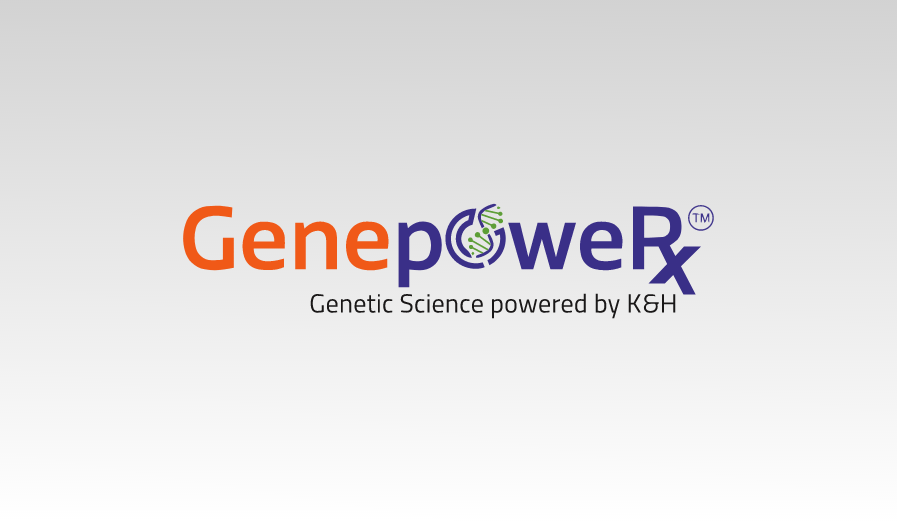
Play Video

Play Video
Dr Hima takes utmost care of her patients and try to analyze the patient’s issues, gives a good amount of time to each patient in her consultation. I found her consultantions very helpful to my in-laws and myself. Dr Kalyan & Dr Hima both take personalized care of each patient. I say for any personalized issue regarding health, you can rely on them. Thank u so much for the care and support
In recent times we have had consulted GenepoweRx Personalized Medicine Clinic for my grandmother as she is diabetic. She was assigned to Dr.Kalyan Uppaluri who is considered the best diabetes doctor in Hyderabad, he looked over the reports of my granny and instructed the diet to be followed and suggested a customized medicine regime to be followed. At present, her sugar level is in normal condition.
Dr.Hima is the best allergist in Hyderabad. My sister has food allergies since her childhood. So, she used to skip some high protein foods. Then we consulted Dr.Hima. Then she listened to her problem and followed up with some medications. My sister used to have those medications on time and now she is free from allergy. Dr.Hima's treatment, indeed, worked very well . She is highly professional, and the hospital was so tidy. And the treatment charges are very reasonable. I would recommend her to everyone for whoever suffering from allergies.
Previous
Next
Our Partners


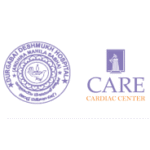


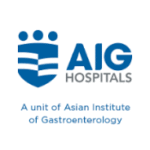
Professional Partnerships
Government Association
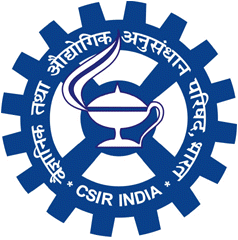
CSIR - Centre for Cellular & Molecular Biology
The Centre for Cellular and Molecular Biology (CCMB) under the Council of Scientific and Industrial Research (CSIR) is a premier research organization in frontier areas of modern biology, and promotes centralized national facilities for new and modern techniques in the interdisciplinary areas of biology and bioinformatics.
